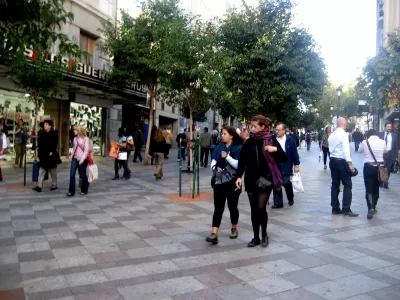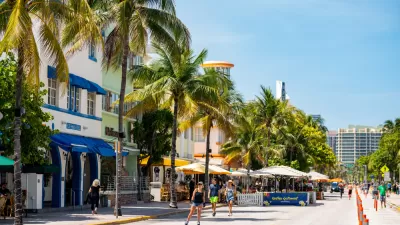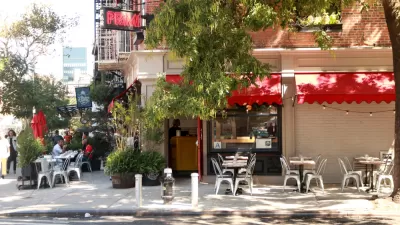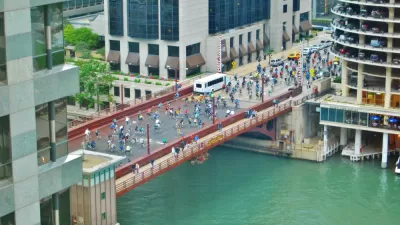The successes and failures of past pedestrian malls can inform the future of pandemic-induced "open streets" programs.

The COVID-19 pandemic, writes Stephan Schmidt, emphasized the importance of public, outdoor space as cities around the world opened previously car-centric streets to pedestrians and reimagined street space as more than a way to move cars from place to place. "Alternatively referred to as slow, open, shared or active streets, many of these pandemic-inspired closures were successful, and several cities opted to continue these street changes over the course of the summer."
Now, "as summer ends and cities continue to reopen, local officials will need to decide whether to revert to the status quo or make the often-popular pedestrianized corridors permanent."
Describing the history of American pedestrian malls and their rise and fall during the 1960s through 1990s, Stephan Schmidt draws comparisons to today's pandemic streets, taking lessons from the successes and failures of the past to inform our current car-free projects. Cities, Schmidt writes, can "utilize design interventions to create more desirable pedestrian environments" and support car-free areas.
Based on his research, Schmidt describes four elements of successful pedestrian malls. These include "creating a sense of enclosure and requiring the use of ground-floor windows to increase transparency," protection from weather and varied seating options, visual appeal created through landscaping, and programmed activities. He also recommends that pedestrian malls seek connections with adjacent properties to reduce a feeling of isolation and increase pedestrian traffic.
"Many downtowns and central business districts now have more full-time residents than they did in decades past, a density boost that bodes well for this new wave of shared streets. Officials must weigh many factors as they bring their urban centers back to 'normal,' but they should remember that, for many, normal means experiencing the city via a car-free public space."
FULL STORY: Lessons From the Rise and Fall of the Pedestrian Mall

Montreal Mall to Become 6,000 Housing Units
Place Versailles will be transformed into a mixed-use complex over the next 25 years.

Planetizen Federal Action Tracker
A weekly monitor of how Trump’s orders and actions are impacting planners and planning in America.

Four Reasons Urban Planners Can’t Ignore AI
It’s no longer a question of whether AI will shape planning, but how. That how is up to us.

Bend, Deschutes County Move to Restrict Major Homeless Encampment
City and county officials are closing off portions of an area known as Juniper Ridge where many unhoused residents find shelter, hoping to direct people to housing and supportive services.

High Housing Costs Driving Down Transit Ridership in LA
When neighborhoods gentrify and displace lower-income residents, transit ridership suffers, new research shows.

Iowa Legalizes Accessory Dwelling Units
A new law will allow property owners to build ADUs on single-family lots starting on July 1.
Urban Design for Planners 1: Software Tools
This six-course series explores essential urban design concepts using open source software and equips planners with the tools they need to participate fully in the urban design process.
Planning for Universal Design
Learn the tools for implementing Universal Design in planning regulations.
City of Mt Shasta
City of Camden Redevelopment Agency
City of Astoria
Transportation Research & Education Center (TREC) at Portland State University
City of Camden Redevelopment Agency
Municipality of Princeton (NJ)
Regional Transportation Commission of Southern Nevada





























